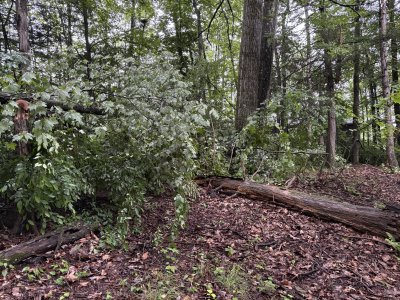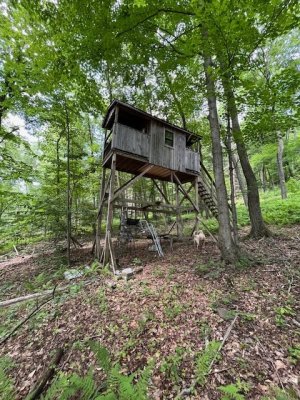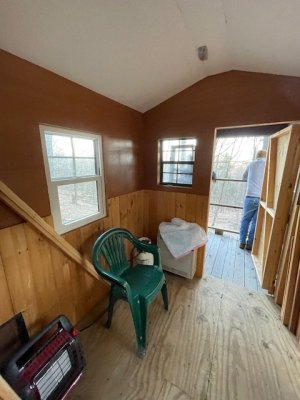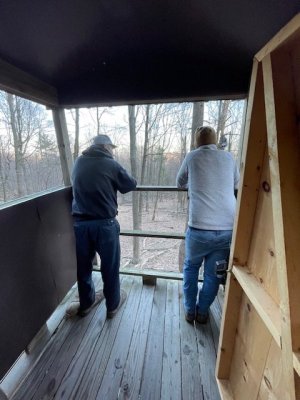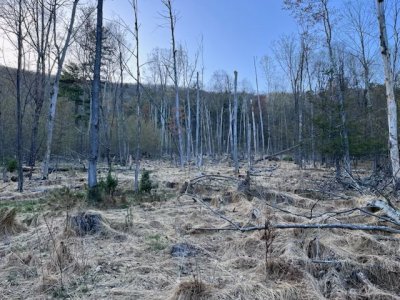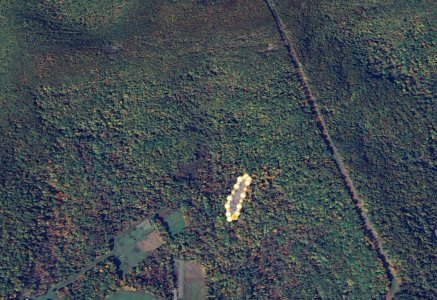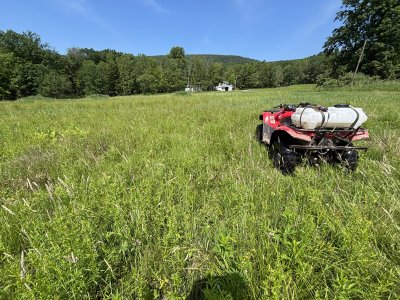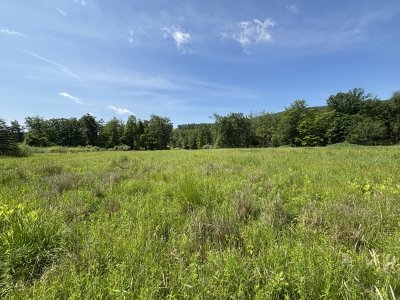j-bird
Moderator
Interesting place. Because every place is different and my experience probably is very different than your (your sat photos show more trees than I have in the entire county block (square mile) of my place). So, just some general thoughts based on my own hard headedness and beating my own head against a wall:
1 - do a proper evaluation of your place. I was too eager and swayed by the food plot industry early on. I didn't need foodplots......I needed cover. Yet, I didn't want to see/hear that. Only once I wised up and addressed or improved my cover did I really see an impactful change. 2 best things I ever did was a timber harvest and plant native warm season grasses.
2 - plan EVERYTHING with access in mind. Small parcels especially. I was way too active on my place and I was hung up on more hunting meant more opportunity. And that isn't true with sloppy access. You will also learn that seeing deer and killing deer are two totally different things. Sometimes we educate the deer way too much and create our own problems......I know I sure did.
3 - listen to your deer and think like a deer. Follow your deer trails, follow the sign, and make notes of what they are eating and when. The world is a different place when your only 4 feet tall and everything is out to get you! You can learn a lot about how the deer use your property, when and why and then use that info to your advantage.
4 - understand we don't live on islands. Unless you have a huge amount of land or a huge fence.....you have to share the deer. As such there is only so much we can control. Most of us can't manage deer like we see on TV. We simply don't have the resources and we don't control enough land. Bucks are mostly going to wander when the time comes. Does will tolerate a lot more disturbance than a mature buck will....and lets face it, not all of us (me especially) are going to hold a mature buck, those are just the cards we are dealt.
5 - remember this is a hobby....we do this for fun. When the fun gets sucked out of it because we are hung up on the neighbors killing deer we don't want them too, or we stress about the $$ involved in a project or the time. Dial it back. Pace yourself......Rome wasn't built in a day, your deer paradise is no different. Most of us are NEVER going to become famous from killing deer. Most of us are NEVER going to make our living killing deer. Most of us want to be remembered once we are gone as being much more than a deer hunter.
6 - this is a journey in most cases.....not a destination. Focus on long term improvements that will require much less maintenance down the road. There will come a day when you don't want to, or even can't be out messing with a foodplot. It's OK to keep projects small and then expand on them down the road as resources become available. Do it right the first time, even if you have to scale back......otherwise you will have to find time and resources to do it again.
Good luck, and enjoy the ride!
1 - do a proper evaluation of your place. I was too eager and swayed by the food plot industry early on. I didn't need foodplots......I needed cover. Yet, I didn't want to see/hear that. Only once I wised up and addressed or improved my cover did I really see an impactful change. 2 best things I ever did was a timber harvest and plant native warm season grasses.
2 - plan EVERYTHING with access in mind. Small parcels especially. I was way too active on my place and I was hung up on more hunting meant more opportunity. And that isn't true with sloppy access. You will also learn that seeing deer and killing deer are two totally different things. Sometimes we educate the deer way too much and create our own problems......I know I sure did.
3 - listen to your deer and think like a deer. Follow your deer trails, follow the sign, and make notes of what they are eating and when. The world is a different place when your only 4 feet tall and everything is out to get you! You can learn a lot about how the deer use your property, when and why and then use that info to your advantage.
4 - understand we don't live on islands. Unless you have a huge amount of land or a huge fence.....you have to share the deer. As such there is only so much we can control. Most of us can't manage deer like we see on TV. We simply don't have the resources and we don't control enough land. Bucks are mostly going to wander when the time comes. Does will tolerate a lot more disturbance than a mature buck will....and lets face it, not all of us (me especially) are going to hold a mature buck, those are just the cards we are dealt.
5 - remember this is a hobby....we do this for fun. When the fun gets sucked out of it because we are hung up on the neighbors killing deer we don't want them too, or we stress about the $$ involved in a project or the time. Dial it back. Pace yourself......Rome wasn't built in a day, your deer paradise is no different. Most of us are NEVER going to become famous from killing deer. Most of us are NEVER going to make our living killing deer. Most of us want to be remembered once we are gone as being much more than a deer hunter.
6 - this is a journey in most cases.....not a destination. Focus on long term improvements that will require much less maintenance down the road. There will come a day when you don't want to, or even can't be out messing with a foodplot. It's OK to keep projects small and then expand on them down the road as resources become available. Do it right the first time, even if you have to scale back......otherwise you will have to find time and resources to do it again.
Good luck, and enjoy the ride!

